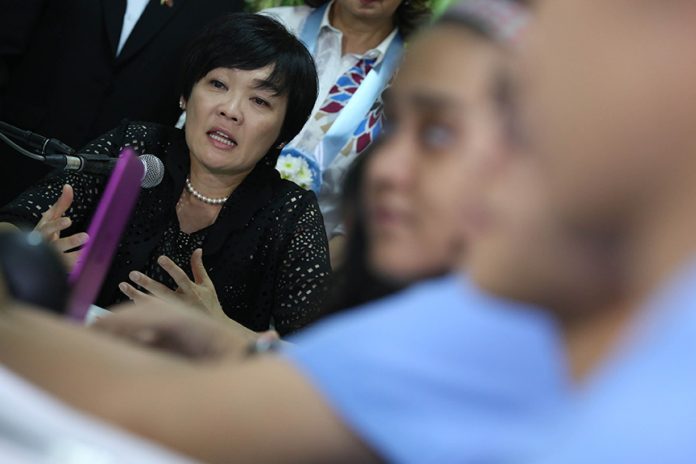
The wife of Japanese Prime Minister Shinzo Abe, Akie will visit the Japanese cemetery in Mintal, Davao City’s “Little Tokyo.”
Akie will pay tribute to the Japanese soldiers buried there during the Japanese Occupation in 1939-1945 including those who died earlier.
Around 300 Japanese soldiers were buried there before and after the World War Two from 1939 to 1945.
The Japanese Cemetery was maintained by the city government. Mintal was established as the Little Tokyo of Davao in 2009.
It was part of the former Abaca plantation owned by Japanese businessman Kyosaburo Ota, who brought the first Japanese workers in the city in the year 1903.
According to Davao Historian Librada Rufu, the Japanese workers were brought into the city to work on the Abaca plantation; later on they owned the greater part of the Abaca plantations in the different parts of the city.
Rufu said that the city was tagged as the Little Tokyo of the Philippines because of the numbers of Japanese here.
“The City was called as the Little Tokyo of the Philippines since there are so many Japanese living here because of the Abaca plantations, they also develop the economy of the city,” she said.
She said that the economy of Davao started from the Osaka bazaar established by the Japanese along the corner Anda and San Pedro st.
Rufu said that the first printing press of the city was established by the Japanese in the old public market in the city which is now the Boys Scout compound.
“The economy of the city was really started by the Japanese, aside from those Abaca plantations, bazaars and other businesses, the Japanese also put up a hospital in Mintal. They even employed Filipino workers to work there,” she said.
Most of the Japanese occupants in the city lived Mintal since the Guianga District has a huge Abaca plantation.
The city government also started during the Japanese era.
Rufu said that the National government was alarmed by the large numbers of Japanese in the City that they made the Davao as a chartered city with appointed officials.
“All officials were appointed since they feared that if the officials will be elected through election, the Japanese supported candidate would win,” she said.
Until now, there are still several Japanese constructions that are still standing, like the Board of liquidator’s building in Daliao Toril.
The Building was part of Yoshiso Furukawa’s administrative building before the world war 2.






